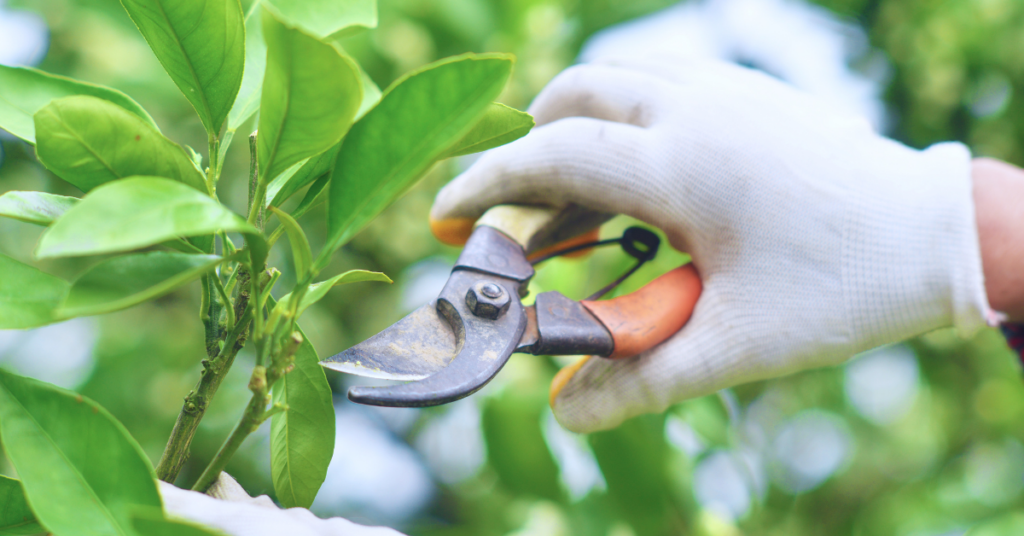Pruning is an important part of keeping your plants healthy and looking great. It ensures that plants receive the correct amount of light, air circulation, and nutrients they need to thrive. When done correctly it can encourage more vibrant blooms, enhance the look of your landscape, and help prevent disease or insect infestations. This guide will provide information on the types of plants that need pruning, the best tools to use, precautions to take, how often to prune, and what to do if you’ve removed too much from a plant. It will also discuss the many benefits of proper pruning.
Introduction to Proper Pruning Practices
The right pruning methods are essential for maintaining healthy and beautiful greenery. Knowing the correct techniques and when to prune will help achieve desired results and keep your garden and lawn looking its best. Pruning is not just about aesthetics—it has various purposes including controlling growth and encouraging fruit and flower production. Depending on the type of plant, pruning should be done periodically throughout the year. In most cases, smaller trees, shrubs, and bushes should be pruned once every two to three years, while larger trees may require pruning every three to five years.
What Types of Plants Need Pruning?
Most deciduous trees, such as birch, linden, crab apple, maples, oaks, flowering cherry, plum, spruces, honey locust, and willows should be pruned when new shoots reach full growth and become woody. Hedges should also be pruned as needed to retain and maintain clean lines. Additionally most coniferous trees can also benefit from pruning to remove deadwood and epicormic growth.

What Are the Best Pruning Tools to Use?
The type of tool you use depends on the size of the plant and the job you’re trying to accomplish. Common tools include pruning shears, loppers, pruning saws, hedge shears, pole pruners, pole saws and chainsaws. Be sure to invest in high-quality tools and properly care for them to ensure accuracy and safety.
What Precautions Should I Take When Pruning?
When pruning, you should always wear the appropriate personal protective equipment such as safety glasses with side shields, hard hat, gloves, long-sleeved shirt, long pants, and steel-toed boots. You should also never prune trees or branches within 10 feet of power lines. It’s crucial to understand the distinction between tree trimming and pruning to ensure the safety of both you and your trees. Learn more about the difference in our article on What Is the Difference Between Tree Trimming and Pruning?

How Often Should I Prune My Plants?
Hedges need the most regular maintenance and should be trimmed annually while smaller trees, shrubs, and bushes should typically be pruned every two to three years, larger trees may require pruning every three to five years. However, it’s important to consider the potential risks of storms and strong winds on your trees. To learn more about protecting your trees from storm damage, check out our article on Preventing Storm Damage to Your Trees.
How Can I Tell If I Removed Too Much From a Plant?
There’s a general rule of thumb when it comes to pruning: don’t remove more than ⅓ of the healthy wood at one time. Doing so can stunt growth or worse, so it’s important to be careful when pruning. If you’re unsure, seek advice from a professional arborist. They can guide you in shaping the growth of young and mature trees. Our article on Shaping Growth In Young And Mature Trees provides valuable insights into maintaining the proper structure and form of your trees.

What Are the Benefits of Proper Pruning?
Proper pruning can be beneficial for both plants and people. It helps maintain plant health, control growth, and encourages flower and fruit production. Once you’ve pruned your trees, you may be left with tree stumps in your front yard. If you’re wondering how to deal with them, our article on What to Do With a Tree Stump in the Front Yard? Hide It! provides creative solutions.”
However, in some cases, it might be necessary to consider tree removal. If you notice any signs of potential tree hazards or decline, such as extensive deadwood or structural instability, it might be time to consult our article on 6 Signs It Might Be Time To Remove Your Tree to make an informed decision. Pruning can also create special forms, rejuvenate old or overgrown plants, and protect people and property.
Conclusion
Pruning is an important aspect of landscaping and gardening. It helps plants stay healthy, aesthetically pleasing, and structurally sound. By following the tips outlined in this guide, home gardeners, landscapers and groundskeepers, and arborists can achieve amazing results. The key is to know the types of plants that benefit from pruning, which tools to use, safety precautions to take, how often to prune, and what to do if you’ve removed too much from a plant. Plus, there are numerous advantages to proper pruning such as enhanced health and aesthetics, controlled growth, greater flower and fruit production, and better protection for people and property. With this knowledge, you can easily keep your gardens and outdoor spaces flourishing and beautiful.
Ready to give your trees in Victoria the care they deserve? Look no further! Our expert tree services are tailored specifically for the unique needs of Victoria’s greenery. Whether you need professional pruning, tree removal, or general tree maintenance, our skilled team is here to help. With years of experience and a deep understanding of the local environment, we’ll ensure your trees thrive and your landscape shines. Don’t wait any longer to take the next step in tree care. Contact us today to schedule a consultation and learn more about our top-notch tree services in Victoria, BC. Visit our city page on tree services in Victoria, BC to discover how we can elevate your tree care experience. Let’s make your trees the envy of the neighborhood!


